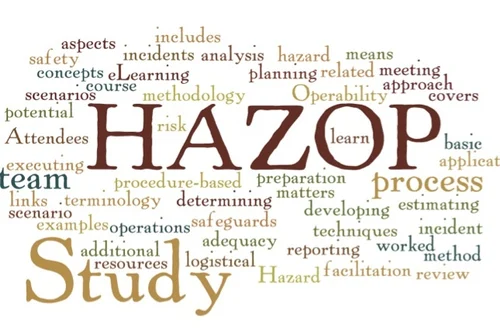Common Missteps in HAZOP Studies and How to Avoid Them

Introduction to HAZOP Studies in Industrial Safety
In high-risk industries such as chemicals, oil and gas, pharmaceuticals, and manufacturing, Hazard and Operability (HAZOP) Studies are a standard method for identifying potential hazards and operability issues within a process system. The HAZOP Study is a structured technique used to analyze process deviations and their consequences. When conducted effectively, it prevents accidents, protects workers, and ensures operational integrity. However, the reliability of the HAZOP process depends greatly on how well it is planned, executed, and reviewed.
Many organizations unknowingly commit errors that compromise the effectiveness of their HAZOP assessments. These missteps can lead to overlooked hazards, regulatory non-compliance, or even severe industrial incidents. This article outlines common mistakes made during HAZOP studies and provides practical strategies to avoid them, based on real-world safety experiences and industrial case insights.
Misstep 1: Inadequate Preparation Before the HAZOP
Why It Happens:
In some cases, HAZOP teams rush into the analysis without a clear understanding of the system design, operating procedures, or previous safety data. Insufficient documentation or outdated process information can lead to gaps in analysis.
How to Avoid It:
-
Ensure that process flow diagrams (PFDs) and piping and instrumentation diagrams (P&IDs) are updated.
-
Gather relevant data including incident history, Safety Audit reports, and maintenance logs.
-
Conduct a pre-HAZOP briefing to familiarize all team members with the process under study.
Misstep 2: Improper Team Composition
Why It Happens:
A HAZOP study is only as good as the people conducting it. Sometimes, teams are assembled without proper consideration of technical expertise or cross-functional representation.
How to Avoid It:
-
Include experts from operations, instrumentation, design, maintenance, and safety.
-
Appoint a trained and neutral facilitator to lead the session without bias.
-
When internal expertise is limited, engage a professional Safety Consultant to provide guidance and oversight.
Misstep 3: Overlooking Non-Routine Operations
Why It Happens:
Many HAZOP sessions focus solely on steady-state operations and overlook scenarios like startup, shutdown, maintenance, or cleaning. These situations often carry higher risk than normal operations.
How to Avoid It:
-
Conduct scenario-specific HAZOPs for each non-routine operation.
-
Include operators and maintenance personnel who can offer practical insights into real-world procedures.
-
Document deviations that are specific to transient conditions and include mitigation strategies.
Misstep 4: Misuse or Underuse of Guide Words
Why It Happens:
Guide words (such as MORE, LESS, NONE, REVERSE, etc.) are core to the HAZOP methodology. Teams may misinterpret these words or skip some altogether, resulting in missed hazards.
How to Avoid It:
-
Stick to the standard list of guide words and apply them systematically to each process parameter.
-
Use example-based training to help team members understand how to use guide words effectively.
-
Document each guide word’s analysis, even if no deviation is found.
Misstep 5: Rushed or Incomplete Sessions
Why It Happens:
Due to time constraints or scheduling issues, HAZOP studies may be rushed. Important deviations might be skipped, and follow-ups may not be addressed.
How to Avoid It:
-
Allocate sufficient time based on the process complexity (e.g., 1-2 days for a single unit).
-
Avoid back-to-back sessions; allow time for rest and documentation review.
-
Schedule follow-up reviews to address unresolved actions.
Misstep 6: Poor Documentation and Action Tracking
Why It Happens:
If findings are not documented clearly, or follow-up actions are not tracked, valuable insights may be lost. This defeats the purpose of the HAZOP exercise.
How to Avoid It:
-
Use structured HAZOP worksheets to log every discussion point, deviation, consequence, and recommendation.
-
Assign responsibilities and deadlines for follow-up actions.
-
Integrate HAZOP findings into the broader Process Safety Management system.
Misstep 7: Ignoring Fire and Explosion Hazards
Why It Happens:
Some HAZOP teams may focus too heavily on operational issues and neglect scenarios that could lead to fire or explosion.
How to Avoid It:
-
Cross-reference HAZOP findings with Fire Audit results to ensure all ignition sources and combustible materials are considered.
-
Involve fire safety specialists in HAZOP sessions involving flammable or explosive processes.
-
Incorporate fire suppression systems and emergency response plans into the final recommendations.
Misstep 8: Not Updating HAZOP Post-Modifications
Why It Happens:
After changes in equipment, process flow, or raw materials, organizations often neglect to re-evaluate the safety implications via a revised HAZOP.
How to Avoid It:
-
Implement a Management of Change (MoC) procedure that triggers a HAZOP update whenever modifications occur.
-
Ensure all revisions are recorded, reviewed, and revalidated through formal re-HAZOP sessions.
-
Communicate changes across all departments involved in the process.
Misstep 9: Lack of Training for HAZOP Participants
Why It Happens:
If team members are unfamiliar with the HAZOP process, they may contribute ineffectively or overlook critical deviations.
How to Avoid It:
-
Provide basic HAZOP training for all participants, including examples and mock sessions.
-
For recurring HAZOPs, maintain a core group of trained professionals to ensure consistency.
-
Encourage cross-training to improve interdisciplinary understanding.
Misstep 10: Treating HAZOP as a One-Time Activity
Why It Happens:
Some facilities conduct HAZOP studies solely for compliance purposes and consider it a checkbox activity. This approach misses the opportunity for continuous improvement.
How to Avoid It:
-
Schedule periodic HAZOP reviews based on risk levels or operational changes.
-
Align HAZOP studies with the organization’s long-term safety goals.
-
Use insights from previous HAZOPs to improve future sessions and decision-making frameworks.
Strengthening HAZOP Outcomes with Cross-Functional Safety Programs
To achieve better results, HAZOP should not exist in isolation. Its findings should inform broader safety frameworks such as:
-
Occupational Safety Programs
-
Emergency response plans
-
Inspection and maintenance protocols
-
Compliance management systems
Collaborating across departments helps ensure that HAZOP outcomes lead to measurable safety improvements across the organization.
Conclusion
HAZOP studies are a cornerstone of industrial safety, but their effectiveness relies heavily on methodical execution and thoughtful engagement. By recognizing and addressing common missteps—such as inadequate preparation, poor team dynamics, and weak documentation—organizations can enhance the reliability and relevance of their hazard analysis.
When combined with regular safety audits, fire risk assessments, and strong process safety programs, HAZOP becomes a powerful tool in building safer, more resilient industrial operations. In many cases, collaborating with a qualified Safety Consultant ensures that the process is guided by expert insight, objective review, and industry best practices.
Ultimately, a well-executed HAZOP contributes not just to compliance, but to a culture of safety that protects people, assets, and the environment.





